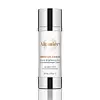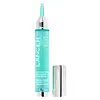What's inside
What's inside
 Key Ingredients
Key Ingredients

 Benefits
Benefits

 Concerns
Concerns

 Ingredients Side-by-side
Ingredients Side-by-side

Water
Skin ConditioningDimethicone
EmollientPropanediol
SolventGlycerin
HumectantCaprylic/Capric Triglyceride
MaskingIsononyl Isononanoate
EmollientLentinus Edodes Mycelium Extract
Skin ConditioningPolysilicone-11
Sodium Acrylates Copolymer
Arbutin
AntioxidantKojic Acid
AntioxidantButylene Glycol Dicaprylate/Dicaprate
EmollientTetrapeptide-14
Skin ConditioningSodium Hyaluronate
HumectantGlycyrrhiza Glabra Root Extract
BleachingSaccharide Isomerate
HumectantPunica Granatum Extract
AstringentCamellia Sinensis Extract
AntioxidantAspalathus Linearis Leaf Extract
Skin ConditioningBoswellia Serrata Gum Extract
Skin ConditioningHoney Extract
HumectantAloe Barbadensis Leaf Juice
Skin ConditioningAllantoin
Skin ConditioningLecithin
EmollientButylene Glycol
HumectantHydroxyethyl Acrylate/Sodium Acryloyldimethyl Taurate Copolymer
Emulsion StabilisingSorbitan Sesquioleate
EmulsifyingMaltodextrin
AbsorbentCaprylhydroxamic Acid
Decyl Glucoside
CleansingDisodium EDTA
Citric Acid
Buffering1,2-Hexanediol
Skin ConditioningCaprylyl Glycol
EmollientSorbitan Isostearate
EmulsifyingSodium Benzoate
MaskingSodium Levulinate
Skin ConditioningHydroxyacetophenone
AntioxidantEthylhexylglycerin
Skin ConditioningWater, Dimethicone, Propanediol, Glycerin, Caprylic/Capric Triglyceride, Isononyl Isononanoate, Lentinus Edodes Mycelium Extract, Polysilicone-11, Sodium Acrylates Copolymer, Arbutin, Kojic Acid, Butylene Glycol Dicaprylate/Dicaprate, Tetrapeptide-14, Sodium Hyaluronate, Glycyrrhiza Glabra Root Extract, Saccharide Isomerate, Punica Granatum Extract, Camellia Sinensis Extract, Aspalathus Linearis Leaf Extract, Boswellia Serrata Gum Extract, Honey Extract, Aloe Barbadensis Leaf Juice, Allantoin, Lecithin, Butylene Glycol, Hydroxyethyl Acrylate/Sodium Acryloyldimethyl Taurate Copolymer, Sorbitan Sesquioleate, Maltodextrin, Caprylhydroxamic Acid, Decyl Glucoside, Disodium EDTA, Citric Acid, 1,2-Hexanediol, Caprylyl Glycol, Sorbitan Isostearate, Sodium Benzoate, Sodium Levulinate, Hydroxyacetophenone, Ethylhexylglycerin
Water
Skin ConditioningPropanediol
SolventButylene Glycol
HumectantSodium Acrylates Copolymer
Glycerin
HumectantAloe Barbadensis Leaf Juice
Skin ConditioningGlycine Soja Extract
Skin ConditioningChondrus Crispus Extract
Skin ConditioningBoswellia Serrata Extract
Skin ConditioningHoney Extract
HumectantSea Whip Extract
Skin ConditioningCamellia Sinensis Leaf Extract
AntimicrobialAspalathus Linearis Extract
Skin ConditioningSodium Hyaluronate
HumectantTetrapeptide-14
Skin ConditioningHyaluronic Acid
HumectantLecithin
EmollientDextran
Palmitoyl Tripeptide-8
Skin ConditioningRosmarinyl Glucoside
AntioxidantCaffeyl Glucoside
AntioxidantGallyl Glucoside
AntioxidantGluconolactone
Skin ConditioningCaprylic/Capric Triglyceride
MaskingCaprylhydroxamic Acid
Disodium EDTA
1,2-Hexanediol
Skin ConditioningMica
Cosmetic ColorantTin Oxide
AbrasiveSodium Benzoate
MaskingPhenoxyethanol
PreservativeCI 42090
Cosmetic ColorantCI 77891
Cosmetic ColorantWater, Propanediol, Butylene Glycol, Sodium Acrylates Copolymer, Glycerin, Aloe Barbadensis Leaf Juice, Glycine Soja Extract, Chondrus Crispus Extract, Boswellia Serrata Extract, Honey Extract, Sea Whip Extract, Camellia Sinensis Leaf Extract, Aspalathus Linearis Extract, Sodium Hyaluronate, Tetrapeptide-14, Hyaluronic Acid, Lecithin, Dextran, Palmitoyl Tripeptide-8, Rosmarinyl Glucoside, Caffeyl Glucoside, Gallyl Glucoside, Gluconolactone, Caprylic/Capric Triglyceride, Caprylhydroxamic Acid, Disodium EDTA, 1,2-Hexanediol, Mica, Tin Oxide, Sodium Benzoate, Phenoxyethanol, CI 42090, CI 77891
Ingredients Explained
These ingredients are found in both products.
Ingredients higher up in an ingredient list are typically present in a larger amount.
1,2-Hexanediol is a synthetic liquid and another multi-functional powerhouse.
It is a:
- Humectant, drawing moisture into the skin
- Emollient, helping to soften skin
- Solvent, dispersing and stabilizing formulas
- Preservative booster, enhancing the antimicrobial activity of other preservatives
Aloe Barbadensis Leaf Juice comes from leaves of the aloe plant. Aloe Barbadensis Leaf Juice is best known for helping to soothe sunburns. It is also anti-inflammatory, moisturizing, antiseptic, and can help heal wounds.
Aloe is packed with good stuff including Vitamins A, C, and E. These vitamins are antioxidants, which help fight free-radicals and the damage they may cause. Free-radicals are molecules that may damage your skin cells, such as pollution.
Aloe Barbadensis Leaf Juice also contains sugars. These sugars come in the form of monosaccharides and polysaccharides, folic acid, and choline. These sugars are able to help bind moisture to skin.
It also contains minerals such as calcium, 12 anthraquinones, fatty acids, amino acids, and Vitamin B12.
Learn more about Aloe Barbadensis Leaf JuiceButylene Glycol (or BG) is used within cosmetic products for a few different reasons:
Overall, Butylene Glycol is a safe and well-rounded ingredient that works well with other ingredients.
Though this ingredient works well with most skin types, some people with sensitive skin may experience a reaction such as allergic rashes, closed comedones, or itchiness.
Learn more about Butylene GlycolCaprylhydroxamic Acid is a chelating agent.
Chelating agents help prevent metal ions from binding to other ingredients. This helps prevent unwanted reactions and effects from using the product.
Caprylhydroxamic Acid is often used with natural antimicrobial products as an alternative to preservatives.
Learn more about Caprylhydroxamic AcidThis ingredient is an emollient, solvent, and texture enhancer. It is considered a skin-softener by helping the skin prevent moisture loss.
It helps thicken a product's formula and makes it easier to spread by dissolving clumping compounds.
Caprylic Triglyceride is made by combining glycerin with coconut oil, forming a clear liquid.
While there is an assumption Caprylic Triglyceride can clog pores due to it being derived from coconut oil, there is no research supporting this.
Learn more about Caprylic/Capric TriglycerideDisodium EDTA plays a role in making products more stable by aiding other preservatives.
It is a chelating agent, meaning it neutralizes metal ions that may be found in a product.
Disodium EDTA is a salt of edetic acid and is found to be safe in cosmetic ingredients.
Learn more about Disodium EDTAGlycerin is already naturally found in your skin. It helps moisturize and protect your skin.
A study from 2016 found glycerin to be more effective as a humectant than AHAs and hyaluronic acid.
As a humectant, it helps the skin stay hydrated by pulling moisture to your skin. The low molecular weight of glycerin allows it to pull moisture into the deeper layers of your skin.
Hydrated skin improves your skin barrier; Your skin barrier helps protect against irritants and bacteria.
Glycerin has also been found to have antimicrobial and antiviral properties. Due to these properties, glycerin is often used in wound and burn treatments.
In cosmetics, glycerin is usually derived from plants such as soybean or palm. However, it can also be sourced from animals, such as tallow or animal fat.
This ingredient is organic, colorless, odorless, and non-toxic.
Glycerin is the name for this ingredient in American English. British English uses Glycerol/Glycerine.
Learn more about GlycerinThis ingredient comes from honey made by bees. It is hydrating, antibacterial, anti-aging, and skin soothing.
Honey also contains amino acids, peptides, Vitamins A, C, and E.
The humectant property of honey draws moisture from the air to your skin. This makes it great at helping to hydrate the skin.
Honey may help reduce the signs of aging due to its antioxidant properties. Fun fact: darker honey has more antioxidants than light honey. The antibacterial property of honey may make it effective at helping to treat acne by killing acne-causing bacteria.
Many people wonder if honey extract is vegan. It is technically a byproduct from bees. This is because honey is created from the digestive enzymes in a bee's stomach.
Remember to be kind to bees :) They are important for many ecosystems and are endangered.
Learn more about Honey ExtractLecithin is a term for a group of substances found in the cell membranes of plants, animals, and humans. They are made up of mixture of phospholipids.
This ingredient has emollient and emulsifying properties.
As an emollient, lecithen helps soften the skin and creates a barrier to keep moisture in.
As an emulsifier, it also helps prevent water and oil ingredients from separating. Lecithin can also help ingredients be better absorbed by the skin.
This is because the phospholipids in lecithin produce liposomes. Liposomes help other ingredients get through the skin barrier.
Depending on the source of this ingredient, lecithin may not be fungal acne safe. This is because some sources of lecithin come from soybean oil, which may feed the malassezia yeast that feeds fungal acne.
We recommend reaching out to the brand you are purchasing from to inquire about the source of their lecithin.
Some other names for this ingredient include soy lecithin and deoiled soy lecithin.
Learn more about LecithinPropanediol is an all-star ingredient. It softens, hydrates, and smooths the skin.
It’s often used to:
Propanediol is not likely to cause sensitivity and considered safe to use. It is derived from corn or petroleum with a clear color and no scent.
Learn more about PropanediolWe don't have a description for Sodium Acrylates Copolymer yet.
Sodium Benzoate is a preservative. It's used in both cosmetic and food products to inhibit the growth of mold and bacteria. It is typically produced synthetically.
Both the US FDA and EU Health Committee have approved the use of sodium benzoate. In the US, levels of 0.1% (of the total product) are allowed.
Sodium benzoate works as a preservative by inhibiting the growth of bacteria inside of cells. It prevents the cell from fermenting a type of sugar using an enzyme called phosphofructokinase.
It is the salt of benzoic acid. Foods containing sodium benzoate include soda, salad dressings, condiments, fruit juices, wines, and snack foods.
Studies for using ascorbic acid and sodium benzoate in cosmetics are lacking, especially in skincare routines with multiple steps.
We always recommend speaking with a professional, such as a dermatologist, if you have any concerns.
Learn more about Sodium BenzoateSodium Hyaluronate is hyaluronic acid's salt form. It is commonly derived from the sodium salt of hyaluronic acid.
Like hyaluronic acid, it is great at holding water and acts as a humectant. This makes it a great skin hydrating ingredient.
Sodium Hyaluronate is naturally occurring in our bodies and is mostly found in eye fluid and joints.
These are some other common types of Hyaluronic Acid:
Learn more about Sodium HyaluronateTetrapeptide-14 is a peptide.
Water. It's the most common cosmetic ingredient of all. You'll usually see it at the top of ingredient lists, meaning that it makes up the largest part of the product.
So why is it so popular? Water most often acts as a solvent - this means that it helps dissolve other ingredients into the formulation.
You'll also recognize water as that liquid we all need to stay alive. If you see this, drink a glass of water. Stay hydrated!
Learn more about Water